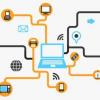Related Content
 |
IoT and the Wisdom of Mobile With over 12 billion devices connected today, the Internet Of Things (IoT) has taken the world by storm and is growing exponentially by the minute. Since mobile’s been around so long, what have we learned from that revolution that can help us in this new connected age of IoT? |
|
 |
How Mobile Development and Testing Inform the Rest of the Industry It’s critical to observe how the future is helping us better test and develop on what’s come before it. How have we taken the lessons learned from mobile development and retrofitted them to other facets of the industry, such as the web? There are three main lessons we’ve learned that apply. |
|
 |
Why Vetting App Ideas Is Becoming More Important Even though mobile app development numbers are sky-rocketing, statistics indicate that only a very small percentage of apps actually make it big—with the average shelf life of a mobile app being thirty days. Are there things that can be done at the app ideation stage to improve the shelf life? |
|
 |
The Internet of Things Has Changed the Definition of Good Software As the Internet of Things takes hold and more common appliances are run by software, people will be increasingly reliant on programmers’ ability to write good code. But how do we define “good code” or “good software”—and how do we get there? Stefano Rizzo explains eight requirements he thinks are essential. |
|
 |
Testing in the Internet of Things The Internet of Things has made practically our whole world connected. With such a huge amount of data being exchanged, there is a great need for testers who understand how to test in the IoT. Sunil Sehgal explains how testing these devices is a little different from testing other machines or programs. |
|
 |
Mobile Testing: Simulators, Physical Devices, or Both? Simulation has many advantages over physical device testing: It costs less, is more stable, and is easier to scale. So do we really need physical device testing for mobile products? The answer is yes and no. It depends on what aspect of quality you want to validate and where you are in the product lifecycle. |
|
 |
The Future of Cloud Connectivity in an IoT World When new technologies are embraced and popularized, they usually fail sooner rather than later. The IoT, new architectures, and cloud systems are developing into perfect storms that will take time to develop and move on to maturity, finally providing calm, consistent conditions. How should you plan to fail? |
|
 |
Getting Started with Wearable Devices? Consider This Platform As popular as wearables have become, they pose new challenges for software developers. Size, power consumption, and focused functionality are the main concentrations. There's a host of platforms that offer developers options for creating wearables, but Lance Gleason advocates one you may not have considered. |








